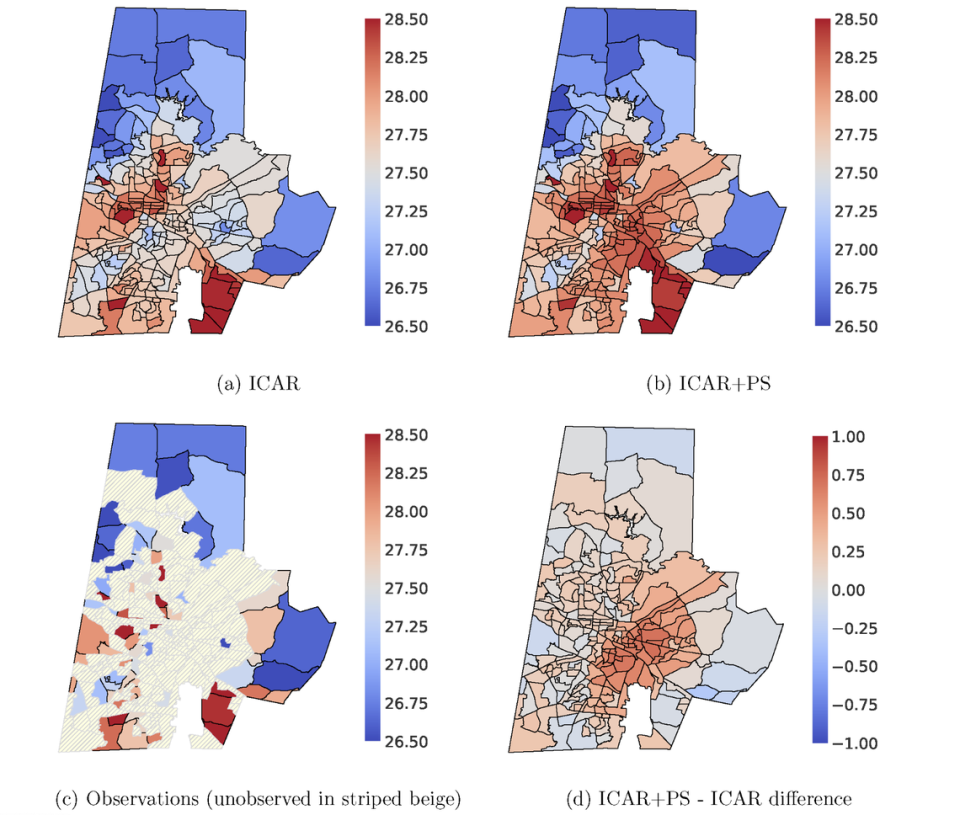Why your phone weather app probably won’t tell you if you’re stranded on a heat island
Asphalt roads run across the city, absorbing heat from the sun’s rays. Concrete buildings surround these roads with close proximity to one another, trapping the heat between. We reduce the temperature on the thermostat and turn on the AC in our cars, producing more heat energy.
This cycle of absorption, containment and production result in what are known as heat islands — often urban areas that experience higher temperatures than their surroundings.
And the temperatures can be significantly higher than what the weather app on your phone suggests.
“If you walk around with your weather app, they don’t really change based on location,” said David Carlson, assistant professor of civil and environmental engineering at Duke University.
But through statistics, Carlson and other researchers from Duke University found a way to correct for this, especially in lower-income areas.
The Weather Channel, a common source for weather information, draws temperature measurements from third-party sources like Weather Underground, where citizen scientists contribute information measured from their backyard personal weather stations. This provides more granular local weather information.
The researchers first analyzed data from Weather Underground and found that temperature was not measured sufficiently in lower income neighborhoods, probably because people there don’t have the hundreds of dollars to spend on a Weather Underground personal weather station.
On July 21, 2023, volunteers and scientists drove across Raleigh and Durham to try to determine how big the temperature difference really was. Recording more than 99,000 temperatures in morning, afternoon and evening, they found that certain areas within the two cities, often in lower-income neighborhoods, were about 10 degrees higher than elsewhere.
With that information, the researchers created a method to estimate the temperatures in those regions.
Then they compared their estimates to the actual data collected on that one day in 2021, and found that their estimates and the data were pretty well aligned.
These estimates corrected some lower-income, unmeasured areas by almost two Fahrenheit degrees. “It’s basically saying that this place is two degrees hotter, on average, over the entire month.”

What’s the value of these estimates?
The researchers hope that this method for providing more accurate temperature estimates in lower-income areas will improve the accuracy of weather reports and help measure disparities in environmental risk. They already started to do this with another study published in Nature in January this year. That study looked at which statistical methods can be used to determine the effect that interventions like planting trees, developing a park or creating a cool roof could have on local temperatures.
Carlson noted that Durham and Raleigh have been trying to address environmental risks by planting more trees and painting buildings white. With an accurate understanding of temperature across all areas of the cities, he said, “We can start trying to do a lot of estimates of, if we make a change to the city…, what [will] the change [be] in the local area?”
Understanding the effect of climate initiatives on temperature will help the city determine how to allocate resources in a way that helps the most people. “Right now, we don’t have very clear estimates of what the different changes we can do are, and what their actual impact will be.”
In the Spotlight designates ongoing topics of high interest that are driven by The News & Observer’s focus on accountability reporting.


